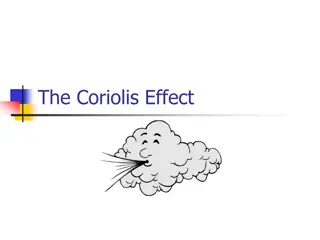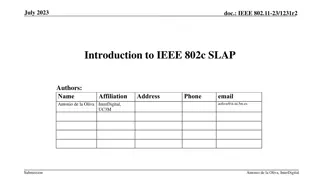Understanding Local Winds and Their Effects
Local winds play a vital role in the climate of specific regions, influenced by factors like nearby bodies of water or mountain ranges. Different types of local winds, such as Foehn, Sirocco, Chinook, Loo, Mistral, and Bora, have unique characteristics and impacts on the environment. For example, the harmful Loo wind in India can cause sunstroke, while the beneficial Chinook wind in North America helps keep grasslands free of snow. Understanding these local winds is crucial for predicting and managing local weather patterns.
Download Presentation

Please find below an Image/Link to download the presentation.
The content on the website is provided AS IS for your information and personal use only. It may not be sold, licensed, or shared on other websites without obtaining consent from the author. Download presentation by click this link. If you encounter any issues during the download, it is possible that the publisher has removed the file from their server.
E N D
Presentation Transcript
LOCAL WINDS TYPES OF LOCAL WINDS
Local winds are caused by the movement of air between low-pressure and high-pressure systems within small areas. As there are so many different types of winds, each one takes on a unique form. Local winds frequently have a significant impact on climate in local regions, so it is critical to understand what causes them.
Local Winds Winds that blow over a small region are known as local winds. These winds blow between tiny low and high-pressure systems. Local geography has an impact on them. Local winds can be influenced by the proximity to an ocean, a lake, or a mountain range. The weather and climate of a region can be influenced by local winds. Local winds are winds that blow only in a specific location for a limited period of time, and their effects are felt only in that area. Tertiary winds are another name for them. They're usually seasonal and have names that are specific to the region,
1.Foehn (Alps-Europe) 2.Sirocco (North coast of Africa) 3.Chinook (Rockies-North America) 4.Loo (Thar Desert- India) 5.Mistral (Mediterranean sea in France) 6.Bora (Mediterranean sea in Italy)
Loo It's a harmful Wind. This very hot and dry wind blows from the west through the plains of northern India and Pakistan in the months of May and June, usually in the afternoons. It is said to have the potential to produce sunstroke in people because the temperature is always between 45 and 50 degrees Celsius.
Foehn (or) Fohn This breeze provides a lot of advantages. Foehn is a hot breeze with local significance in the Alps. A strong, gusty, dry, and warm wind blows on the leeward side of a mountain range. Because the windward side takes away any moisture in the entering wind in the form of orographic precipitation, the air that descends on the leeward side is dry and heated (Katabatic Wind). The temperature of the wind varies between 15 and 20 degrees Celsius. Wind speeds up the ripening of grapes and makes it easier for animals to graze by melting snow.
Chinook This breeze provides a lot of benefits. Chinook is Foehn-like winds that blow down the west slopes of the Rockies in the United States and Canada. It benefits farmers east of the Rockies because it keeps the grasslands free of snow for the majority of the winter.
Mistral The winds that blow from the Alps over France and into the Mediterranean Sea are known as the Mistral. The Rhine River crosses the Rhine Valley. It's very cold and dry, with a howling wind. As a result, blizzards are common in southern France.
Sirocco It's also a dangerous wind. Sirocco is a Mediterranean wind that originates in the Sahara and blows at the speed of a hurricane throughout North Africa and Southern Europe. It's created by low-pressure bands moving eastward across the Mediterranean Sea dragging a warm, dry tropical air mass northward, with the wind originating from the Arabian or Sahara deserts. The cooler, wetter air from the marine cyclone mixes with the hotter, drier air from the continent, and the low's counter-clockwise circulation propels the mixed air across Europe's southern coasts. The Sirocco provides dusty, dry weather to northern Africa, storms to the Mediterranean Sea, and cold, rainy weather to Europe.
Bora Winds The bora wind commonly blows down from the mountains on the eastern section of the Adriatic Sea, flowing mainly from the northeast through the gaps in DINARIC ALPS. On some occasions, especially winters, the bora dominates the entire Adriatic Sea and may extend to Malta. Other times, the wind is localized and can only be felt a few miles offshore. The strongest winds are often felt along the eastern shore of the Sea from Trieste to the Albanian border. In Italy, the bora wind is classified into two; light bora (characterized by clear sky) and dark bora (characterized by gathering cloud on the hilltop).























